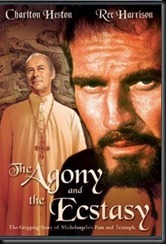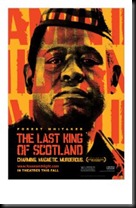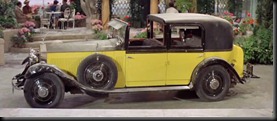
The Agony and the Ecstasy follows the life of Michelangelo in his painting of the Sistine Chapel in the Vatican. Pope Julius II is set on upgrading the Vatican and while pursuing war, he creates and environment in which art flourishes. These excesses will lead to complaints about the nature of the Catholic Church out of which the Protestant reformation will arise. The film begins with a biography of Michelangelo and his work. The film is establishing the prominence of Italy in Renaissance art.
The geography is divided between the hills of Tuscany around Florence and the Vatican in Rome. We see the statues and buildings of Florence briefly, but the film spends far more time in the hills of the area. Quarrying marble for statues and buildings is the output of these hills. We get a chance to see the old methods by which the hill is carved apart and broken into rock chunks of useful size. The marble of Florence is world famous and the raw material of many major works of art.
The film uses the broad vistas of the hills to give Michelangelo his vision of the design for the Sistine Chapel of God creating Adam and humankind. The mountain top view is essential to the story and made graphically clear in the special effects.
While some outdoor scenes to spot the rest of the film, the bulk of the geography is indoors at the Vatican. Seen are the outdoor settings carefully reconstructed for street scenes. The interior is mostly one of scaffolding until the painting is unveiled in its wonder.
While the Geography is quite apparent to the viewer, the History is center stage. The papacy is not a solely religious body. The corruption, which again will lead to the Protestant reformation, is clear. The military nature of the papacy is a dominant theme. Julius II is picturd as a better military leader than Pope.
On a more personal level the film carries a message for postmodern times that great work is not done overnight. Julius II is constantly asking Michelangelo when it will be finished. Michelangelo has no real estimate given the never ending process which is creation. The need to fill one’s needs immediately in today’s world is in clear contrast with the painfully extended process of creating great works

